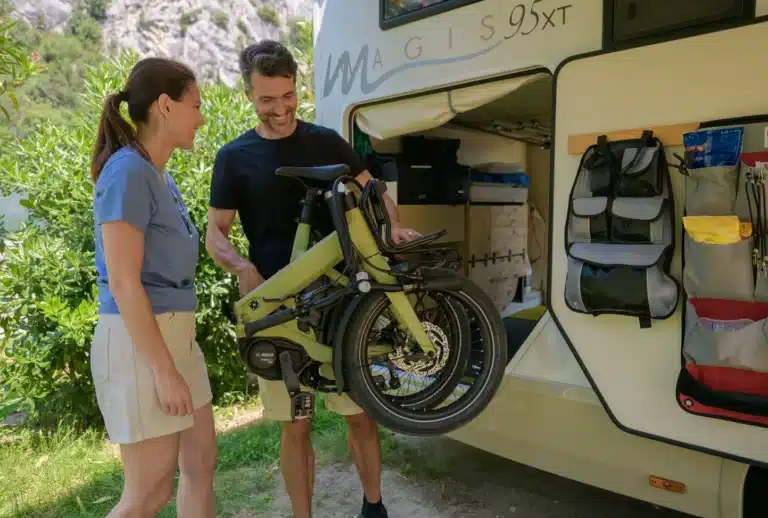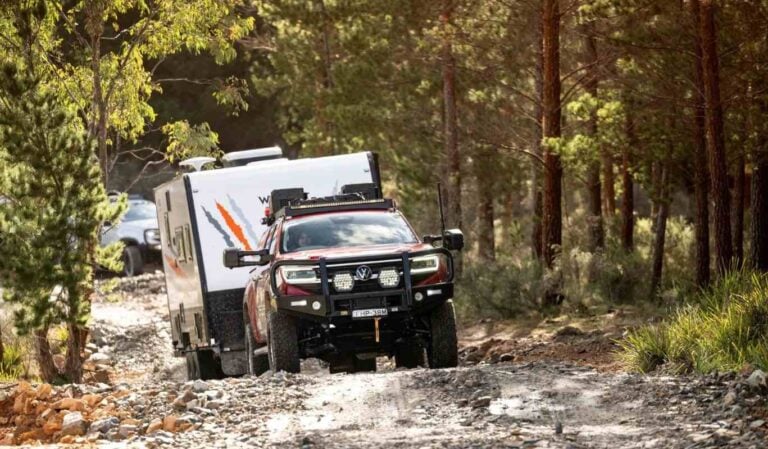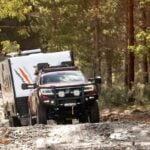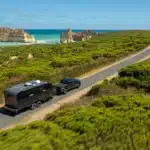
Your tow vehicle is unlikely to be delivered to the showroom floor optimised for the job you want it to do. Most of us have competing needs for our 4x4s: drive around town, tow, carry loads, and drive off road. The manufacturer doesn’t know how the car will be used, so it can’t optimise for any specific use.
When it comes to towing, there are some useful improvements you can make, such as adding towing mirrors, heavy-duty suspension, a brake controller and a long-range fuel tank. Today, we’re going to look at a modification well known to off-roaders but perhaps not as familiar to towers. That’s the cross-differential lock, otherwise known as a diff-lock or just a locker.
The lazy diff problem
But first we need to understand what a differential is before we lock it, and that begins with understanding the problem it solves.
When a car goes around a corner, the inside wheels travel less distance than the outside wheels. Yet both wheels need to be driven, or turned by the engine. The differential is a clever set of cogs that allows two wheels on an axle to be driven but turned at different speeds when the vehicle corners. Without differentials, you’d be scrubbing and squealing your tyres every time you turned a corner.
So far, so good. For normal road users, that’s as far as the conversation goes; there’s no reason for them to even know a differential exists. But off-roaders run into a problem with differentials – they’re lazy. Look at this:
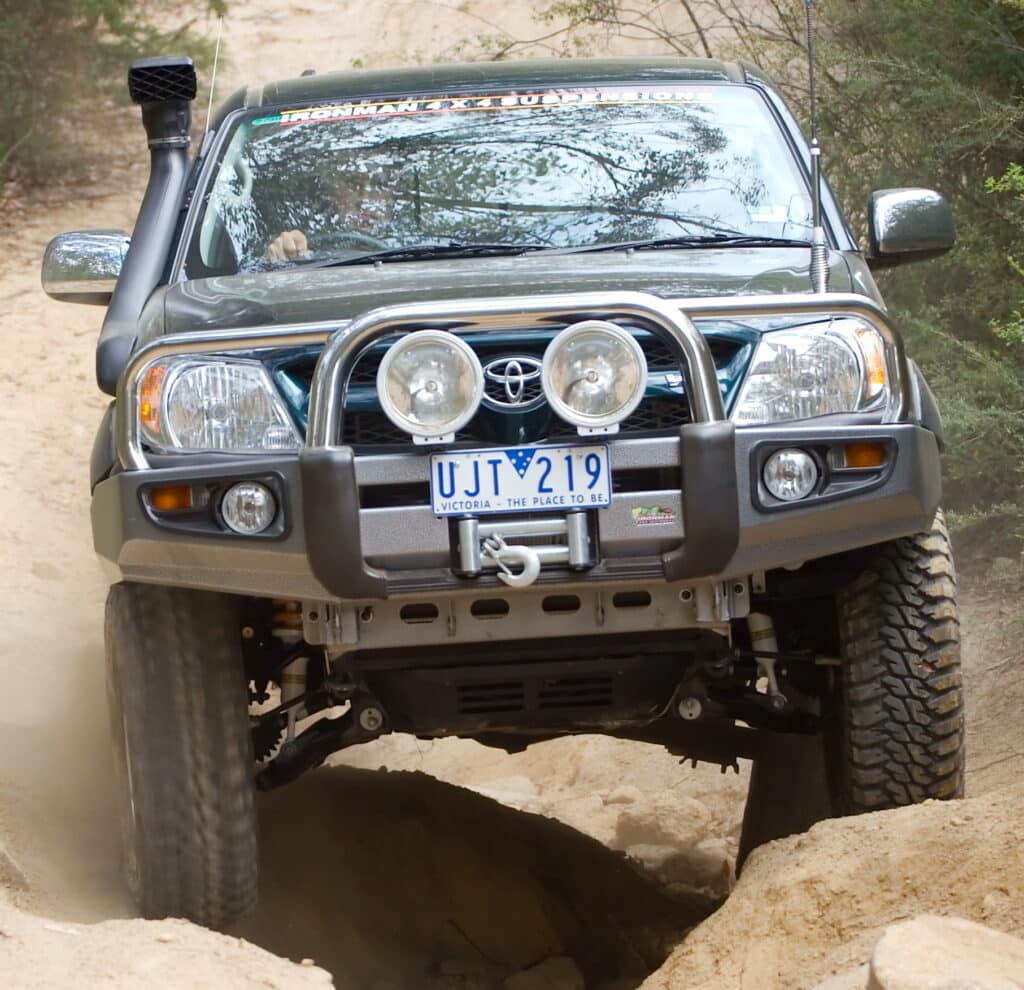
The driver’s side wheel in this image is almost in the air and spinning madly. The other wheel is doing nothing. That’s because the differential has sent all the drive to the wheel that’s easiest to turn – the one without traction. The wheel with traction, on the other hand, isn’t getting enough drive to move the car forwards.
Introducing the diff-lock
This is the differential problem and there are several ways to solve it. Unless your car is more than about 25 years old, it will have built-in brake traction control. This enables the car’s computers to sense when one wheel is spinning and apply the brakes to that wheel, while sending drive to the wheel with traction.
Another way to solve the problem is to lock the differential so both wheels turn at the same speed. This is the definition of a differential lock. It’s important to understand that in this article I’m only talking about lockers on the front and/or rear axles, hence the term ‘cross-axle differential locks’, which I’ll just call front or rear lockers from now on. Some vehicles have a differential between the front and rear axles – called a centre differential lock, or centre lock.
Lockers can make a huge difference to off-road ability, allowing a car to crawl over obstacles that would otherwise require more speed. But the disadvantage is that forcing both wheels to turn at the same speed restricts the steering. This is especially true with front lockers, so you only engage them when necessary.
Diff-locks and towing
Your 4×4 tow vehicle may well have a rear locker. They come standard in Ford Rangers and Everests, for example. Other makes have them too, depending on trim level, for example the Toyota Prado. Some off-road cars have a front locker as well, for example RA-model Ranger Raptors, Grenadier Trialmasters, some Toyota LandCruiser 70 Series and Jeep Rubicons. But many vehicles do not, so the question is – should you add one?
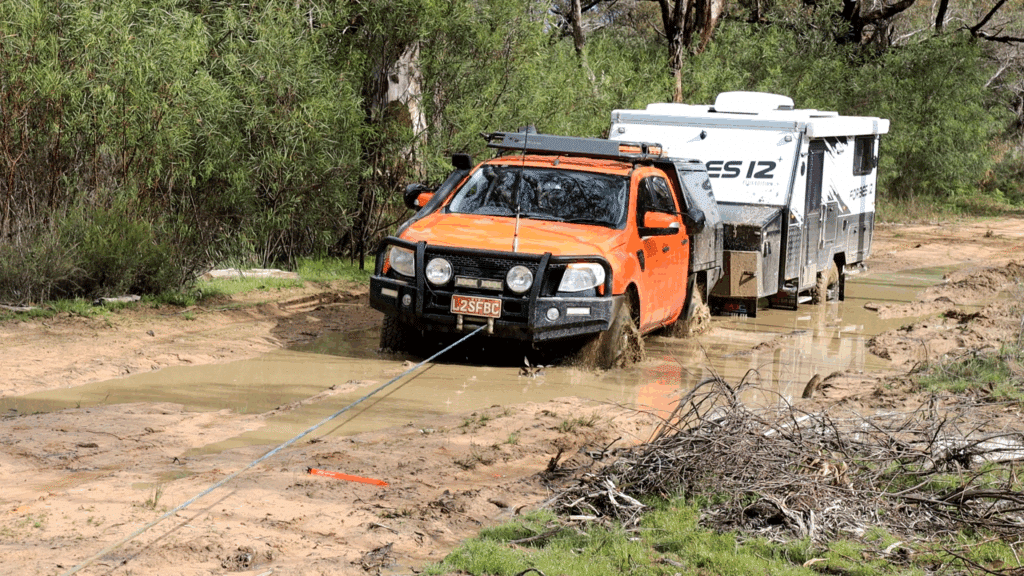
Let’s first consider someone intending to tow off road in low-range 4×4 territory. In that case, yes, a rear locker and, preferably, a front locker would improve off-road performance. This is the case regardless of towing. But add a trailer and your car has to work much harder, and therefore needs every bit of traction it can get, so a locker is useful. Also, once you add a trailer, you greatly reduce your ability to use momentum to launch over obstacles. Lockers allow you to slowly crawl up rutted terrain that would otherwise require a run-up. In these scenarios, you can get a wheel-in-the-air effect, when the lazy diff is liable to spin the wheel with least traction and sap your forward progress. In fact, a wheel needn’t even be in the air. Just having less traction than its partner on the other end of the axle is enough to make it spin.
Front or rear?
So, what do you choose – a rear locker, front, or both? Front or rear is a bit of a holy war in 4×4 circles, with good arguments on both sides. But add a trailer and the choice is clear – you want your locker in the rear. This is because the tow ball mass adds significant load (weight) to the rear axle, which increases its grip and decreases the front-axle load slightly, reducing the front-tyre grip. So, you want to put the locker in the rear when towing off road. Should you add a front? Sure, it’ll definitely help. I have both in my Ranger; the rear is a stock unit and I have an aftermarket locker on the front.

But I’m only a casual off-roader
What about the casual off-roader? Someone who tows with a 4×4 and doesn’t regularly look to go off road, but nonetheless wants to know their rig can tackle a bit of rough terrain? Here, the case for lockers is less clear-cut. It’s a rarely-need-it, but-glad-you-have-it-when-you-do scenario, much like an electric power winch. So, when might you need a locker in your tow vehicle?
Essentially, whenever one wheel on an axle loses traction, and you want to move forwards or backwards. Brake traction control also allows you to do this, but it’s reactive; it needs to wait for a wheel to spin then it acts. Lockers don’t need to wait, they are already turning the wheels at the same speed, and that means no extra revs or momentum and slow control, which is important with a heavy trailer. The effectiveness of traction control also varies. Toyotas, Land Rovers and recent Jeeps have excellent systems which reduce the need for lockers. Whereas Ford and Isuzu are a bit behind, so their cars benefit more from lockers.
Best terrain for diff-locks
Okay, so what are some example scenarios where you might find yourself reaching for the cross-axle locker switch? A rutted track into a campsite where the suspension has to work hard to keep wheels on the ground. Steep dirt hills with any form of rut. Sand dunes with scallops where people have wheel-spun their way to the top. Descending a rutted hill. Even manoeuvring on a sloping campsite when you have two wheels on wet grass and two on bitumen could be easier with a locker.
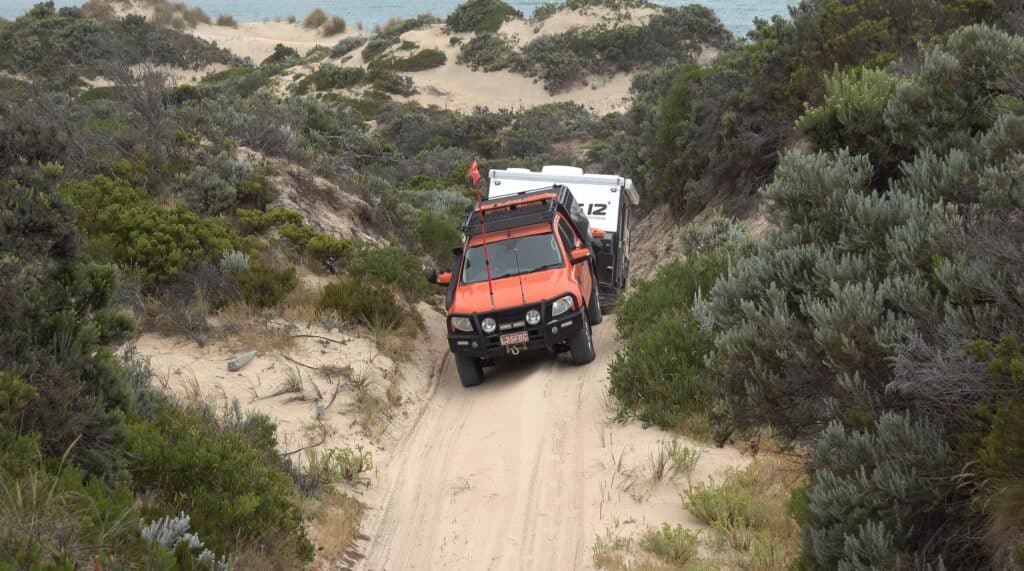
The thing about diff-locks is that, while they can make otherwise inaccessible tracks driveable, they are mostly used to make driveable roads much easier. They do this by enabling you to drive much slower and steadier than would otherwise be possible. For most people, that’s what they want out of a diff-lock.
Buying aftermarket
So, why not just fit a diff-lock or two just in case? You certainly can, and there’s no effect on the car when the lock is not in use. You’d never know it’s there. It takes up no additional space and adds only about 4-5kg to the car’s weight. The main reason not to fit a diff-lock is cost . It’ll set you back about $1500 to $3000 per axle. Once in, there’s no extra maintenance, and the car will be slightly more attractive come resale. But, of course, you won’t get all your money back.
When looking to purchase a diff-lock, it’s important to do your homework. Suppliers such as Terrain Tamer offer an E-Locker Kit, which includes a Harrop Eaton Elocker and all the bearings and gaskets required for installation. The benefit of elockers over traditional air lockers is they are activated by an electronic in-dash switch powered by 12V, and don’t require an external power source or air compressor. Other aftermarket diff-lock manufacturers include ARB and TJM.
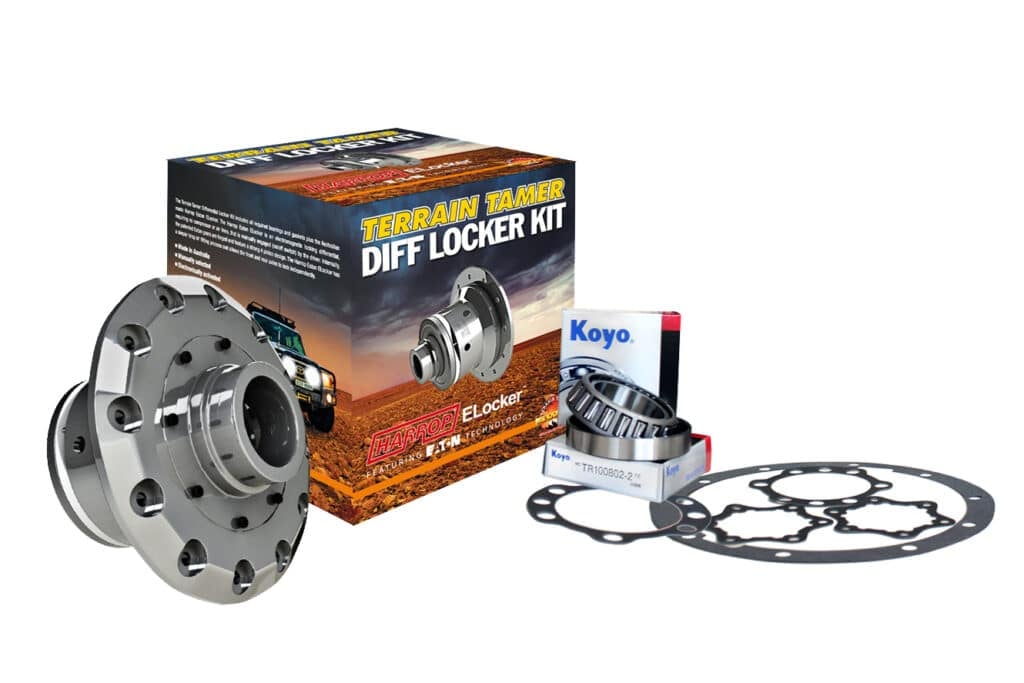
Crunch time
Still undecided on whether you need a diff-lock? Here’s my advice:
- If you intend to traverse tough 4×4 terrain, where the car will be in low range, then seriously consider at least a rear diff-lock, if not front and rear.
- For casual off-road towers, I would be much less inclined to fit a locker. If you have a car with something like an LC300 or Jeep, then the brake traction control is so good there’s much less need. If you have a Ford, Isuzu or similar then the case for a diff-lock is stronger.
- If I was setting up a car for general towing on the blacktop, then lockers would be quite a long way down my modification list, after mirrors, suspension, tyres and storage systems.
Ultimately, it’s your call and you need to make the decision specific to your circumstances.


